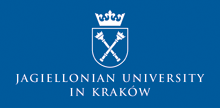Speaker
Description
The improved chiral nucleon-nucleon (NN) interaction with the semi-local regularization in the momentum space was derived recently [1] up to the fifth order of the chiral expansion (N4LO) and even some contributions from the next order have been tested in so-called N4LO+ model. In comparison to the first generation of the chiral potential [2] the regularization of the potential is now performed in a semi-local way what leads to a much better control of finite-cutoff artifacts. Such a semi-local regularization has been already proposed in the [3] where it was applied in coordinate space. In recent work [1] an alternative approach for semi-local regularization performed directly in momentum space was derived and used to construct the NN interaction. Beside the new regularization method also other important improvements, like new way of fixing of parameters for pion-nucleon vertexes or new NN databased used to fix free low energy constants have been implemented in the model [1]. The new force leads in the nucleon-nucleon (nucleon-deuteron) scatterings to very precise description of observables up to 300 (200) MeV and delivers only tiny dependence on the regularization parameter.
The chiral interaction of Ref. [1] has been never applied to study the electromagnetic processes in two-nucleon system. We will present such first applications especially focusing on the dependence of predictions on the regularization parameters and on the chiral order used. It is well known, that the non-local regularization of the chiral forces lead to a strong dependence of the predictions on regularization parameters already at N2LO [4,5,6]. Using the semi-local regularization in the coordinate space improves the data description both for the electromagnetic as well as for the weak processes [7]. In this contribution we, for the first time, extend the investigations from Ref. [7] to the chiral model with semi-local regularization in the momentum space [1] and, in particular, we will discuss the predictions for the deuteron photodisintegration reaction at the photon energy range up to 100 MeV. The comparison of predictions with the data and the predictions based on older chiral models will be presented.
[1] P.Reinert, H.Krebs, and E.Epelbaum, Eur. Phys. A54, 86 (2018).
[2] E.Epelbaum, W.Glöckle, Ulf-G.Meißner, Nucl. Phys A637, 107 (1998); Nucl. Phys. A671, 295 (2000).
[3] E.Epelbaum, H.Krebs, and Ulf-G.Meißner, Phys. Rev. Lett. 115, 122301 (2015).
[4] R.Skibiński, J.Golak, H.Witała, W.Glöckle, A.Nogga, and E.Epelbaum, Acta Phys. Polon. B37, 2905 (2006).
[5] R.Skibiński, J.Golak, D.Rozpędzik, K.Topolnicki, and H.Witała, Acta Phys. Polon. B46, 159 (2015).

